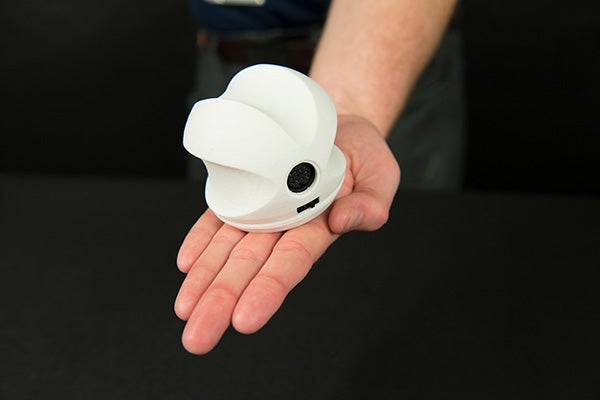On the classic TV series Star Trek, Dr. McCoy made his job look easy. Diagnosing a patient was a simple matter of whipping out a device called a tricorder and waving it over the person, accompanied by suitably futuristic sound effects. More often than not, the diagnosis was grim and McCoy would declare to Captain Kirk, with professional deadpan, “He’s dead, Jim.”
The dream of a working tricorder may be on the verge of becoming a reality, as eight teams from around the world gather in San Diego this month to deliver prototypes of their entries for the Qualcomm Tricorder XPRIZE. The rules for the contest are simple: build a device that will allow consumers to perform their own tests for up to 24 different ailments and deliver a diagnosis on the spot, as well as send the data to a cloud-based software platform for further analysis by physicians.
The execution is anything but simple, however. To succeed, the devices have to cram an array of sensors into a compact package, along with the computational power to analyze the data they produce and return a correct diagnosis.
On supporting science journalism
If you're enjoying this article, consider supporting our award-winning journalism by subscribing. By purchasing a subscription you are helping to ensure the future of impactful stories about the discoveries and ideas shaping our world today.
In addition to sensors, some of the competitors are leaning heavily on the computational element. Team Final Frontier, for example, led by Pennsylvania emergency room physician Basil Harris, has a patient respond to a questionnaire on a tablet as a major input to the system. Harris says his team’s task is to program his knowledge and experience into the system.
Others are advancing the state of the art in sensor technology, for example by relying mainly on lab-on-a-chip-style analysis of fluids. Team DNA Medicine Institute (DMI), based in Cambridge, Mass., is also headed by a physician, Eugene Chan. DMI’s rHEALTH X1 analyzes a single drop of blood using laser light and tiny test strips. “We’ve got specialized reagents that we call nanostrips,” says Chan. “These miniaturized test strips allow us to look at the soluble markers inside the blood sample.”
One team is actually attempting to do most of its data collection from sensors that do not make physical contact with the body, a la Star Trek. The device of team SCANurse, based in London, does much of its analysis using visual and sound processing. “We are using urine, as other teams are,” says team leader Anil Vaidya, a medical engineer. “And then we’re using a combination of other systems like optical processing, some sound processing, and movement as well.”
Ease of use may turn out to be the determining factor in what device wins the top prize. “It’s got to pass the cell phone standard,” says Gene Kallenberg, who heads the physician oversight committee at the UC San Diego Health System, which has started the process of finding patients who will test the tricorders through December. “That is the ubiquitous personal technology.”

Credit: Final Frontier
After final evaluation of the data by a panel of judges, the XPRIZE Foundation will award a $7 million first-place prize, along with $2 million second-place and $1 million third-place prizes to runner-up teams.
The goal of the contest is to foster commercialization of the technologies needed to build sophisticated in-home diagnostic and monitoring devices. Exactly what form those technologies will take is still not clear, nor is whether any one device will eventually make it to the market.
Some of the teams—Cloud DX for example—already have commercial systems on the market. Qualcomm Tricorder XPRIZE Senior Director Grant Campany says one likely scenario is that winning teams will combine forces to create a hybrid product that combines the best features of each of their designs. “Every team has things that work really well, and other things that are a little clunky,” says Kallenberg.
As for whether the devices will make the sounds from Star Trek, at least one team, SCANurse, considered the option, but decided not to risk a copyright violation. Nevertheless, says team leader Vaidya, “The sound will be good.”
Michael Belfiore is a Star Trek fan who writes about futuristic technologies for a variety of publications. He wrote about the Google Lunar XPRIZE in the April 2012 issue of Scientific American. Find him online at michaelbelfiore.com.